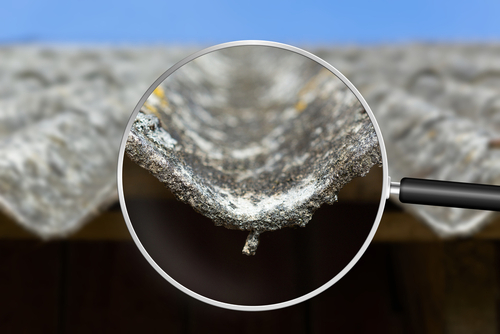In this article, we will be talking all things Asbestos, exposure, why it’s dangerous, and what we can do to help you manage it.
So, what is asbestos?
According to the Health and Safety Authority, “Asbestos is the name for a group of natural occurring mineral fibres which are strong and both heat and chemically resistant. Due to these properties, asbestos was commonly used in the past as insulation and fire proofing. It was also used as a component in other building materials.”
Where is it found?
Asbestos can be found in any premises built or refurbished before the year 2000. This includes both commercial and residential properties. Asbestos can also be found in a range of construction materials, including flooring, walls, ceiling, etc. A detailed survey would be needed to determine exactly where asbestos is present throughout the building.
Why is asbestos dangerous?
Asbestos is dangerous due to its ability to release microscopic fibres into the air when disturbed. These fibres are extremely durable and can remain suspended in the air for long periods of time. When inhaled or ingested, they can penetrate deep into the lungs or other organs, causing serious health problems.
The primary health risk associated with asbestos exposure is the development of asbestos-related diseases. These diseases include:
- Asbestosis: Prolonged exposure to asbestos fibres can lead to the scarring of lung tissue, known as asbestosis. This condition causes progressive lung damage, leading to breathing difficulties, persistent coughing, and increased susceptibility to respiratory infections.
- Mesothelioma: Asbestos exposure is the primary cause of mesothelioma, a rare and aggressive form of cancer that affects the lining of the lungs, abdomen, or heart. It has a long latency period, often taking several decades for symptoms to appear after initial exposure.
- Lung cancer: Asbestos exposure also increases the risk of developing lung cancer. When asbestos fibres are inhaled, they can irritate and damage lung tissue, potentially leading to the development of cancerous cells.
- Other cancers: Besides lung cancer and mesothelioma, asbestos exposure has been linked to an increased risk of developing cancers in other organs, such as the larynx, ovary, and gastrointestinal tract.
It is important to note that there is no safe level of asbestos exposure. Even a single exposure to asbestos fibres can pose a potential risk to health. Therefore, strict regulations and precautions are necessary to minimize exposure to asbestos and prevent its adverse health effects.
We are a leading provider of asbestos management and refurbishment surveys and related services throughout Ireland. In addition to surveys we provide identification advice, removal support, asbestos laboratory analysis, asbestosis information, etc. Our asbestos consultants identify and assess the risks posed by asbestos in the workplace in accordance with Irish legislation and current best practice.
Once your asbestos has been removed or encapsulated, our consultants will issue your site clearance certificate. This is essential in ensuring legislative compliance to ensure you pass inspection and avoid costly delays. Our clearance certification also provides assurance to you, your employees, and all third parties that the area is asbestos-free/safe.

